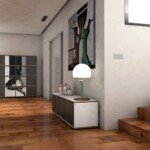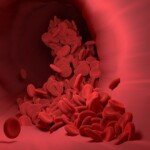The ultimate guide to laser steel cutting: precision, efficiency and why GreatLight performs well
Steel remains the cornerstone of modern manufacturing, known for its strength and versatility. But shaping this strong material with high precision and efficiency requires advanced technology. Enter Laser steel cutting – Completely change the process of manufacturing. At GreatLight, we use cutting-edge laser technology to combine our deep expertise in five-axis CNC solutions to deliver superior steel cutting results. This guide dives into the process, its strengths, and how we can ensure demanding applications get top-notch results.
Understanding laser steel cutting: basic knowledge
The core of laser steel plate cutting is to focus a highly concentrated coherent light beam onto the steel plate. This intense local heat quickly melts, evaporates or burns away the material along a predefined path controlled by computer software. Key components include:
- Laser source: Modern systems are mainly used Fiber laser. Compared to older CO2 lasers, they offer high power efficiency, excellent beam quality (suitable for complex cutting), faster speeds and lower operating costs.
- Cutting head: The assembly includes a lens that focuses the laser beam to an incredibly fine point, and a nozzle that provides auxiliary gas.
- Auxiliary gas: High-pressure airflow (usually oxygen, nitrogen, and sometimes compressed air) blows molten material out of the cut (cut width), ensuring clean edges and stabilizing the cutting process. The choice of gas depends on the type of steel and the desired edge finish.
- CNC controller: This is "brain." It interprets CAD/CAM data and precisely controls the movement of the cutting head (or material) along the X, Y, and Z axes to perform complex designs with high accuracy.
Why laser cutting dominates the steel field
Laser cutting has become the gold standard for steel processing for compelling reasons:
- Unrivaled accuracy and strict tolerances: Achieve complex contours, sharp corners and complex geometries, with tolerances usually within ±0.1 mm. This is essential for parts that need to fit accurately in the assembly product.
- Excellent cutting quality: Generates smooth, nearly vertical edges with very few burrs (especially when using inert gases such as nitrogen), reducing or eliminating the need for secondary finishing. The heat-affected zone (HAZ) is also very narrow.
- Material efficiency and minimum waste: CNC nesting software optimizes material usage, minimizing scrap and saving costs – which is critical for expensive steel alloys.
- High speed and productivity: For thinner to medium specification laser cutting, the speed is significantly faster than traditional methods such as plasma or water jet cutting, thereby achieving rapid turnover.
- Contactless process: The laser beam does not physically contact the material, eliminating tool wear and mechanical stress/deformation.
- Flexibility and automation: Easily switch between different design programs, repeat batches consistently, and integrate into automated production lines. Great for prototypes and mass production.
Which steels can be laser cut?
Laser cutting can effectively process a variety of steel alloys:
- Low carbon steel (low carbon steel): Due to its excellent machining and cost-effectiveness, it is the most commonly used laser-cut steel. Clean cutting is achieved using O2 (for oxidative cutting, faster, slightly oxidized edges) and N2 (for cleaner, non-oxidized edges).
- Stainless steel: Used for medical, food processing and building components. The cutting is mainly made with nitrogen to obtain original, oxide-free cutting, thereby maintaining corrosion resistance. Thicker materials require higher laser power.
- Alloy Steel and Tool Steel: Steels with higher carbon and alloy content can be effectively cut, but heavier parts may require preheating to prevent rupture and cutting parameters need to be optimized. Nitrogen assist is common for cleaning edges.
- High-strength steel (HSS) and advanced high-strength steel (AHSS): More and more are used in cars. Cutting requires special parameters, usually nitrogen gas is required to avoid damaging the microstructure characteristics of the edges.
Key applications across industries
The accuracy and efficiency of laser-cut steel parts powers a wide range of industries:
- car: Structural components, brackets, chassis components, exhaust systems.
- aerospace: Structural components, mounting bases, brackets, and fluid system parts.
- Industrial Machinery: Gears, housing panels, protective devices, custom brackets, fixtures and fixtures.
- Architecture and Architecture: Structural support, decorative facade, signage, and brackets.
- Medical devices: Surgical instrument components, equipment housing, and brackets.
- Consumer Products and Electronics: Electrical panels, shells, complex decorative elements.
Why choose Gretel for laser steel cutting?
At GreatLight, we don’t just cut steel; We provide precision-designed solutions:
- State-of-the-art fiber laser cutting: We invest in the latest high-power fiber laser systems that enable rapid cutting of a wide range of steel types and thicknesses with excellent edge quality.
- Five-axis CNC integration expertise: While laser cutting itself focuses mainly on 2D/3D, we Five-axis CNC machining Offers unique advantages. We essentially understand precision positioning, complex geometry and high tolerance requirements. This expertise provides guidance for our laser cutting process to machining more complex parts that require precise holes or profiles that fit perfectly with subsequent CNC machining requirements. We handle transitions seamlessly.
- Comprehensive one-stop service: GreatLight offers more than just cutting. We offer a full set Post-processing and finishing services:
- Deburring (blasting, grinding).
- Precision CNC machining (milling, turning – leveraging our five-axis capabilities).
- Heat treatment (annealing, quenching, backtemper).
- Surface treatment (powder coating, electroplating, anodizing – corrosion resistance and aesthetic).
- assembly.
- Simplify your supply chain and reduce lead times with one-stop management.
- Material mastery: We understand the nuances of cutting different steel alloys. Our technicians optimize cutting parameters (power, speed, air pressure/type, focus) for each specific steel type and thickness to ensure optimal results and material integrity.
- Quick customization and fast delivery time: Need a rapid prototype or a rapid production run? Our efficient workflow and advanced machinery allow Quick turnaround On custom orders.
- Cost-effective solution: We focus on process optimization, material efficiency and simplified operations to deliver Competitive pricing It does not affect quality. Economies of scale and our comprehensive approach to service often lead to significant overall project cost savings.
- Quality Control Commitment: There are strict inspection protocols at each stage to ensure that every laser-cut part meets your precise specifications and dimensions.
in conclusion
Laser steel cutting represents the perfect synergy of advanced technology and material capabilities, providing unparalleled precision, speed and versatility for modern metal manufacturing. From complex thin-spec parts to thicker structural parts, it provides efficient, high-quality solutions. It is crucial to choose a partner who masters the technology and understands the entire manufacturing process from cutting to finishing.
GreatLight brings together cutting-edge fiber laser technology, deep five-axis CNC machining expertise and a comprehensive one-stop finishing service to provide precision laser-cut steel parts to meet the most demanding specifications. We simplify your production chain, ensure quality and provide significant value. Ready to turn your design into reality?
Quickly and accurately customize your high-quality laser steel parts. Contact GreatLight now to get a competitive offer and discover the advantages of a truly integrated manufacturing partner!
FAQ
Q1: How thick can Honglaite laser cut steel?
A: Although the capabilities continue to develop with the technology, we usually have laser-cut low carbon steel sizes that can reach the 25mm (1 inch) and stainless steel Gundam 20mm (3/4 inch) Use our high power fiber lasers. Thinner specifications (0.5mm+) are usually suitable for complex jobs, but we do well across the entire range. Please contact us and inform you of the specific thickness and materials for precise functionality.
Q2: What file format is required for laser cutting?
A: We strongly tend to Vector-based CAD files For example, DXF or DWG. These formats provide precise geometric data, ideal for controlling laser paths. PDFs with vectors are acceptable, but DXF/DWG is preferred for complex geometry. High resolution raster images (such as JPEG or PNG) are not suitable for production cutting.
Q3: Will laser cutting deform thin steel parts?
Answer: The thermal process essentially introduces some heat. However, laser cutting produces Very narrow heat-affected zone (HAZ). This can minimize warpage for the vast majority of thin steel applications. For extremely precise flatness requirements for thinner specifications (<2mm), technology or specific post-treatment (flattening). Our technicians can advise on best practices.
Q4: Can laser cutting achieve burr-free cutting?
one: Absolutely. When cutting steel with nitrogen-assisted gas, especially stainless steel or mild steel, we can achieve very clean, close to vertical edges Minimum to no burrs. Oxygen cutting of low carbon steel may leave slightly oxidized edges and may leave small burrs that are easy to remove. We can also provide post-cut deburring services to ensure perfect edges.
Q5: How is Grett laser cutting shop different from other laser cutting shops?
Answer: First of all, we have a deep foundation. Precision five-axis CNC machining Let us have an extraordinary understanding of strict tolerances and complex geometry that affects how we perform laser cutting. Secondly, our real One-stop service – Not only cutting, but also precision machining, heat treatment and any surface finishing you need – eliminate the hassle of supply chains. Third, our commitment to advanced technology and process optimization ensures Quality, speed and cost-effectiveness.
Q6: Do you only cut steel or other metals?
A: While this guide focuses on steel (our core strengths), our laser systems can also accurately cut a variety of materials Nonferrous metals Including aluminum, brass, copper and titanium, each requiring specific parameters and gas selection.
Q7: How quickly can I get parts?
A: We are proud Quick turnaround. Prototypes can usually be shipped within a few days, and the production quantity depends on complexity and quantity. Please contact us and provide your project details for an accurate delivery time quote. Our integration services significantly compress the entire project time.
Ready to experience the difference between GreatLight? Get a laser steel cutting quote now!

















